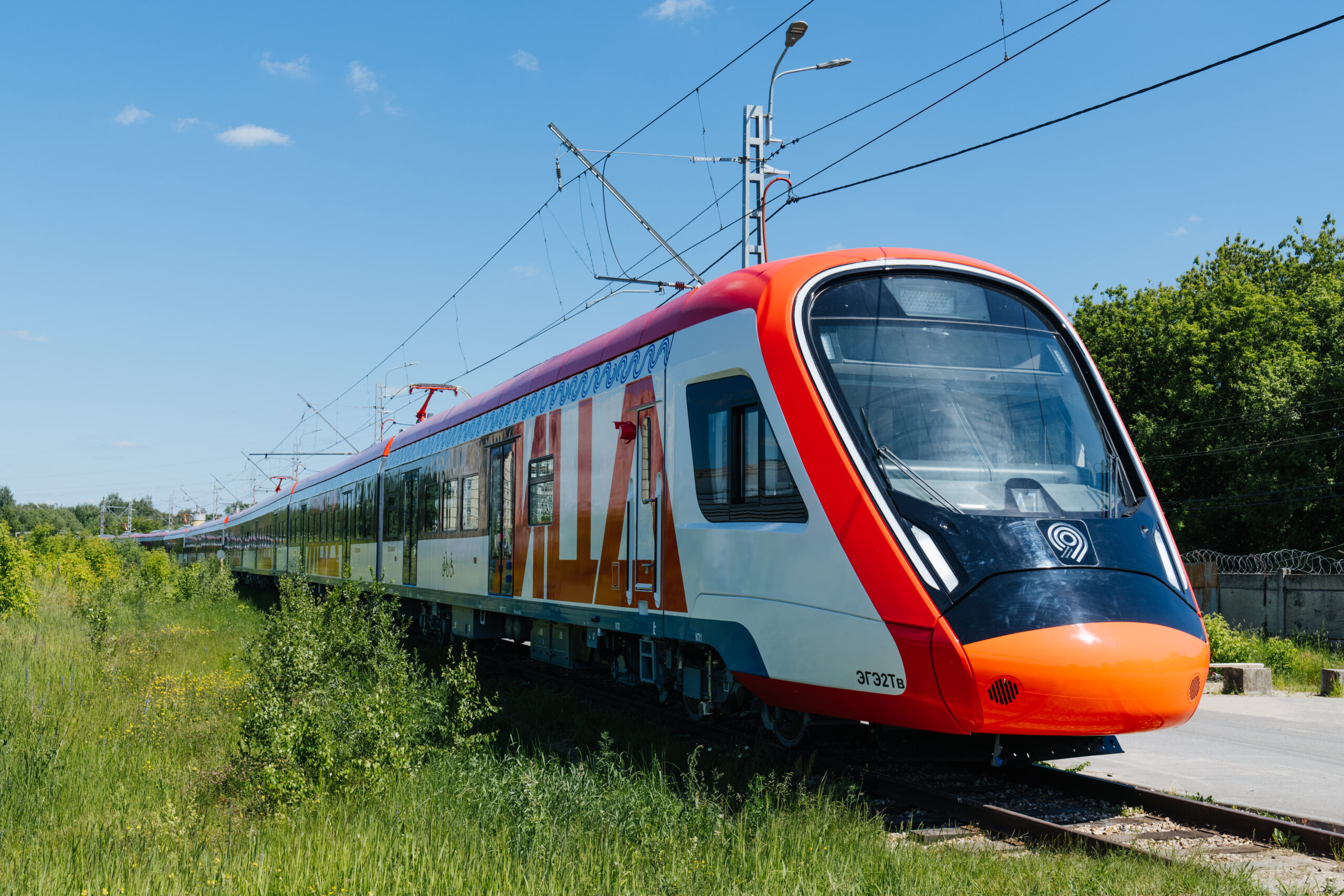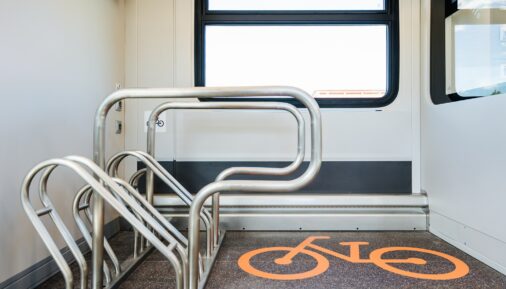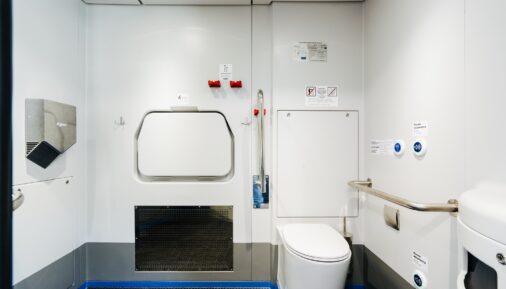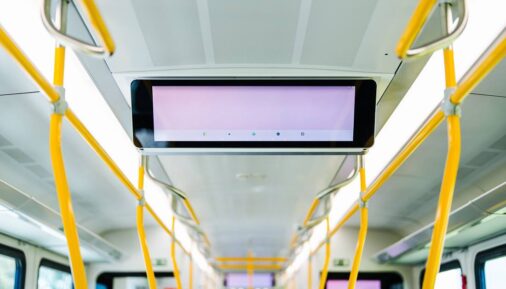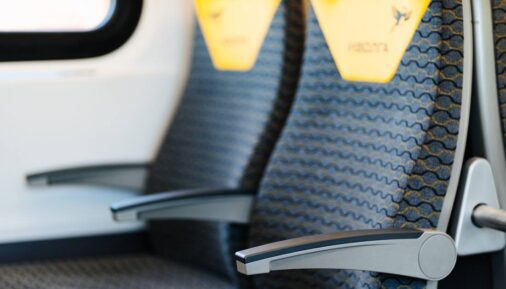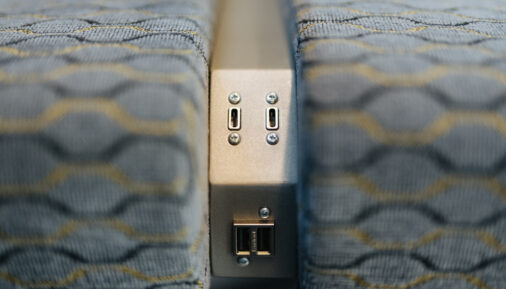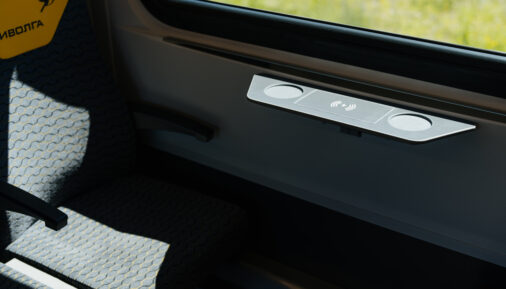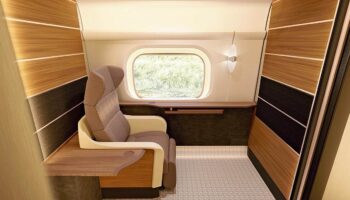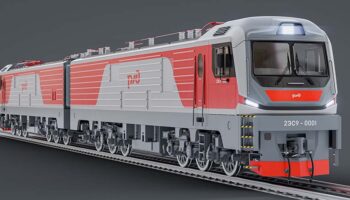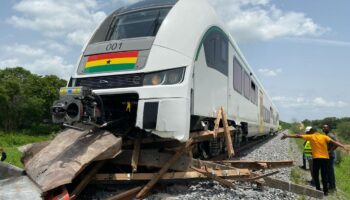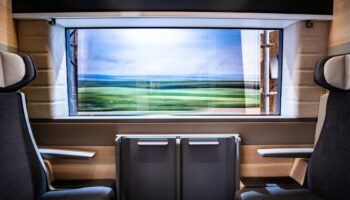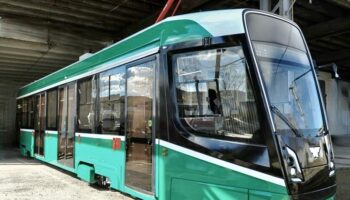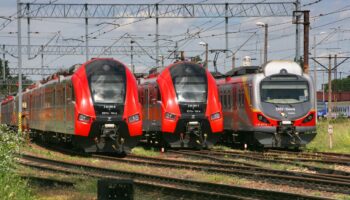Russia: A new generation of two-door trains produced at the Tver Carriage Works (part of Transmashholding, TMH) received a certificate of compliance with the EAEU technical regulations requirements. This is the first serial electric train with a design speed of 160 km/h, which is entirely constructed in Russia. It includes a GoA2 automation system, and the ability for real-time check of more than 300 parameters during train operation is provided.
The certificate of conformity for the EGE2Tv “Ivolga 3.0” DC electric train serial production was issued to TMH on June 27 and is valid until June 2027. Earlier, at the end of May, TMH reported that the train was accepted by the customer, and an act was signed on its compliance with the technical specification. “It allows to start the production of a pilot batch, the volume of which is defined as 35 eleven-car trains”, TMH declared.
EGE2Tv “Ivolga 3.0” EMU trials at the VNIZHT Experimental Ring, April 2022
The first customer of the new vehicles is Central Exurban Passenger Company (CEPC), the largest suburban railway operator in Russia. At the end of 2021, TMH won CEPC’s tender for the delivery of 95 such 11-12-car electric trains in two-door and three-door modifications (two doors and three doors per each board), as well as to provide its maintenance throughout the entire life cycle. The cost of the contract is 392.4 bln RUR incl. VAT ($5.28 bln USD), that made it one of the largest deals in the global rolling stock market in 2021. As for tender conditions, the maximum price for the EMUs itself was fixed at the level of 142.5 bln RUR incl. VAT ($1.92 bln USD or $1.68-1.84 mln USD per car depending on the trains configuration).
The rolling stock is expected to be used in the Moscow city railway system – on the third and fourth directions of the Moscow Central Diameters (MCD-3 and MCD-4). The first trains will be handed over to the CEPC this year. In mid-May, Moscow Deputy Mayor Maxim Liksutov indicated that the launch of transportation on MCD-3 and MCD-4 is scheduled for the end of 2023.
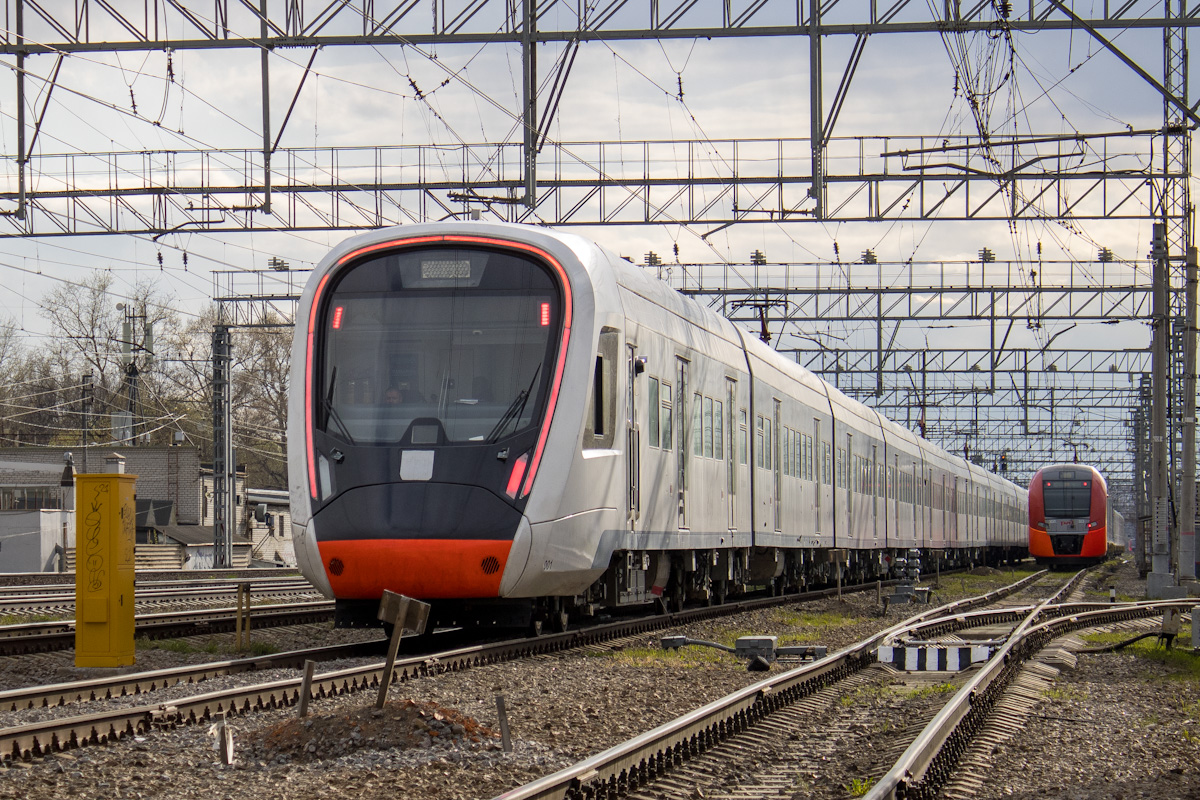 EGE2Tv “Ivolga 3.0” EMU by TMH at Kuskovo station, April 2022. Source: Nikita P., railgallery.ru
EGE2Tv “Ivolga 3.0” EMU by TMH at Kuskovo station, April 2022. Source: Nikita P., railgallery.ru
EGE2Tv is the third modification of the Ivolga EMU platform by TMH. The development of the train platform began at the Tver Carriage Works in 2013. The first EG2Tv trains with a design speed of 120 km/h were produced in 2014. Further on, the manufacturer received orders from CEPC for the supply of Ivolga trains (including Ivolga 2.0 modification in 2018), which were put into operation at MCD-1 and MCD-2. According to TMH, 39 Ivolga EMUs are currently running on the MCD.
In 2022, the two-door version of the Ivolga 3.0 was certified. The key differences from previous modifications are an increase in the design speed from 120 to 160 km/h, as well as an increase in acceleration to 0.9 m/s2, which is in demand for transportation in urban areas with short hauls and a large number of stops. The door opening is 1400 mm. According to the technical requirements published by CEPC, the maximum occupancy of a train with a density of standing passengers of 7 people/m2 should be provided at a level of at least 3,380 people.
Also, the CEPC technical specification assumes that the possibility of subsequent modernization to partial and full ATO of the train will be integrated. Additionally, all train systems must be prepared to transmit diagnostic data online, and the integration of a predictive analysis system is also implied. According to TMH, the new Ivolga 3.0 train has the GoA2 ATO level. “The existing equipment on the Ivolga trains can provide one-person control and automatic movement if needed”, TMH stated to ROLLINGSTOCK. The real-time monitoring system was implemented similarly to Ivolga 2.0: it analyzes more than 300 operating parameters of the train and its key components, such as traction and electrical equipment, door systems, water supply and air conditiong systems.
Significant changes have been made to the interior of the train: its design was developed by the 2050.LAB National Center for Industrial Design and Innovation. Passenger seats got a new shape, each seat unit has Type-A and Type-C chargers, as well as folding armrests for each passenger. Hooks for personal items are placed under the table. In the head car there is a possibility to charge electric scooters and there is a space for bicycles. The exterior of the passenger seats features interwoven hexagons graphics that is a part of the TMH’s brand DNA.
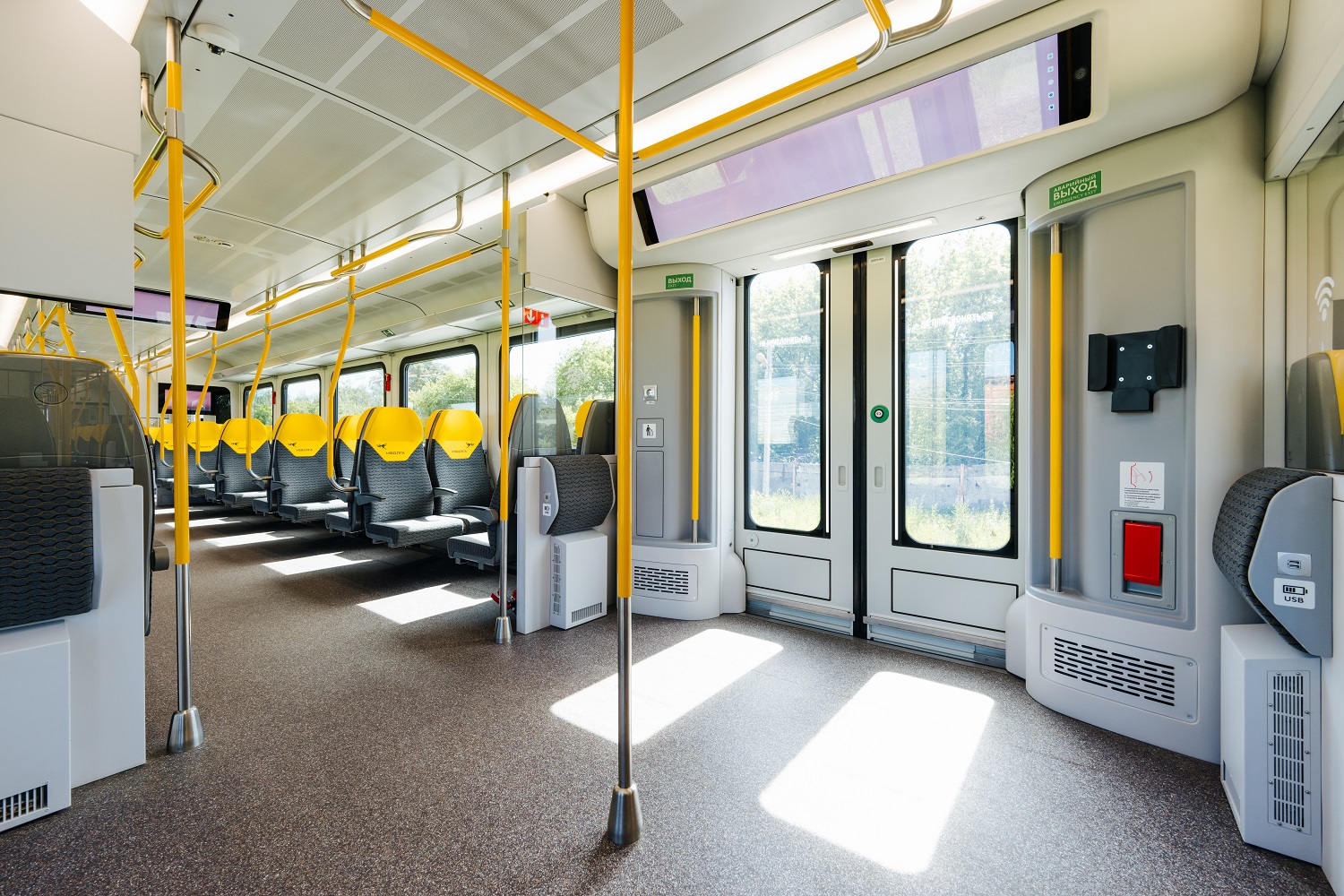 The interior of the EGE2Tv “Ivolga 3.0” EMU. Source: TMH
The interior of the EGE2Tv “Ivolga 3.0” EMU. Source: TMH
TMH noted that the Ivolga 3.0 train consists of domestically-built Russian components, and more than 380 companies from all over the country are involved in the production of the train. In October 2021, Key Systems and Components (KSC) reported that it supplies Ivolga 3.0 with a wide range of HVAC equipment components, electronics and electrical parts, interior and exterior. As the Gudok newspaper wrote in May, the train will use the Transpnevmatika brakes, as well as PST-1200 traction converters (manufactured by KSС, certified for serial production in 2022).
KSC additionally told ROLLINGSTOCK that a new climate system will be produced at the Transcon subsidiary specially for the new series of trains. It is a monohull with a parallel system of refrigerant circuits that operate independently of each other. KSC notes that the advantages of the new technology are reduced energy consumption, lower maintenance costs and ease of maintenance: access to only one unit per car is required now.
Also, KSC subsidiaries will supply more than 40 items of interior and exterior equipment for the Ivolga 3.0 train. So, fiberglass components by the RPA Voyage company will be manufactured using improved Light RTM or Flex Molding technologies, which should increase the strength of interior elements by 35%.
In an interview with the Railway Equipment Journal in the summer of 2021, TMH CEO Kirill Lipa indicated that Ivolga 3.0 would functionally compete with the trains of the FLIRT platform by Stadler. In Russia, Ivolga’s main rival is the Lastochka EMU platform produced by Ural Locomotives (part of Sinara – Transport Machines). The Ural plant has already produced more than 200 such trains of various modifications (ES2G, ES1P and ES2GP) with a design speed of 160 km/h, but with an acceleration rate of 0.7 m/s2 which is due to the interregional specification of the train. The development of the new Vostok train for urban transit is already announced by Ural Locomotives. It is planned to achieve 1.1 m/s2 acceleration level in this train. The Vostok EMU is announced to be ready for trials in May 2023 and to be certified in November 2023.
The mentioned Lastochka train was developed by Ural Locomotives in partnership with Siemens Mobility and is based on the Desiro platform, which has been produced since the early 2000s. In mid-May, against the background of the situation in Ukraine and the imposed sanctions, the German manufacturer announced a complete exit from the Russian market, but at the moment the production of Lastochka EMUs continues: according to Railgallery.ru, 5 ES2G trains have been produced at Ural Locomotives in the last 2 months.



